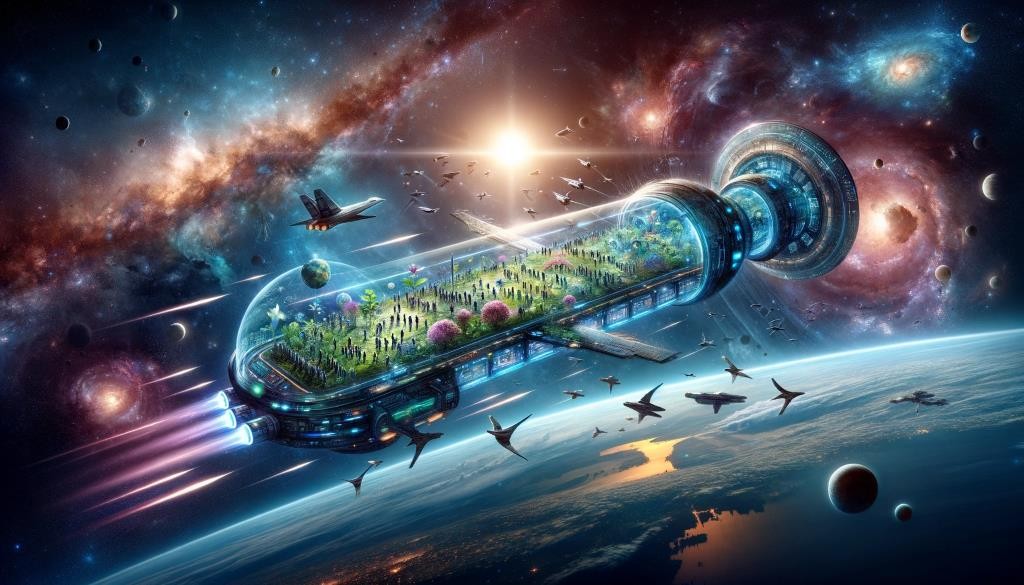
Today, I delved into the topic of humans becoming a multi-planetary or multi-solar system species. Given that Earth is expected to remain habitable for another billion years or so (before the Sun’s gradual increase in luminosity renders our planet uninhabitable) humanity has a substantial window to explore alternative habitable locations in the universe. However, this venture, barring a drastic technological breakthrough enabling near-light-speed travel, would span many thousands of generations. Below are some insights and conclusions from my discussion with ChatGPT 4.
The aspiration to venture beyond our home planet and explore other star systems is a hallmark of human curiosity and ambition. But the reality of such monumental undertakings raises numerous questions about feasibility, technology, and the very nature of human existence.
Current State of Space Travel: We have made incredible strides in space exploration, but the journey to other stars presents challenges of an entirely different magnitude. The fastest spacecraft of our era, such as the Parker Solar Probe, travel at speeds that are a mere fraction of the speed of light. To traverse the immense distances to the nearest stars, like Alpha Centauri at 4.37 light-years away, would take thousands of years with current technology.
Technological Innovations: Significant advancements are needed, particularly in propulsion technologies and life-sustaining systems. While theoretical concepts like nuclear pulse propulsion and antimatter engines offer some hope, they remain far from practical application.
The Generational Spacecraft Concept: One plausible solution for such extended voyages is the development of generational spacecraft. These vast, self-sustaining habitats would support human life across multiple generations, encapsulating entire ecosystems and a variety of skills and knowledge necessary for long-term survival and maintenance.
Ethical and Biological Strategies: To maintain genetic diversity and mitigate the risks of long-term space habitation, strategies such as sperm and egg banks, genetic engineering, and even cloning may be employed. These methods, however, come with complex ethical and technical considerations.
The Path Forward: Given the current rate of technological progress, it’s conceivable that within the next thousand years, we might develop the capabilities for interstellar travel. The establishment of colonies on Mars and other bodies within our solar system would serve as stepping stones and learning platforms for these future endeavors.
In Conclusion: The concept of humans becoming a multi-planetary or multi-solar system species is a fascinating blend of our scientific capabilities and our inherent drive to explore. It represents a significant challenge but also an extraordinary testament to the potential of human ingenuity and determination. While the journey to the stars may be long and filled with unknowns, it holds the promise of an incredible new chapter in the story of humanity.








